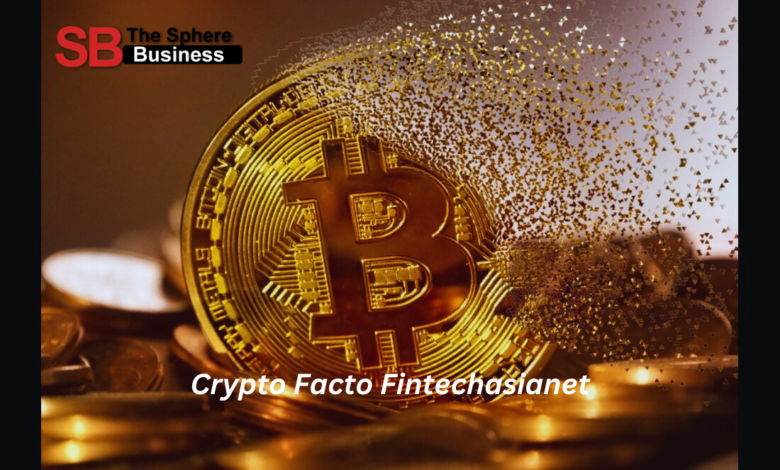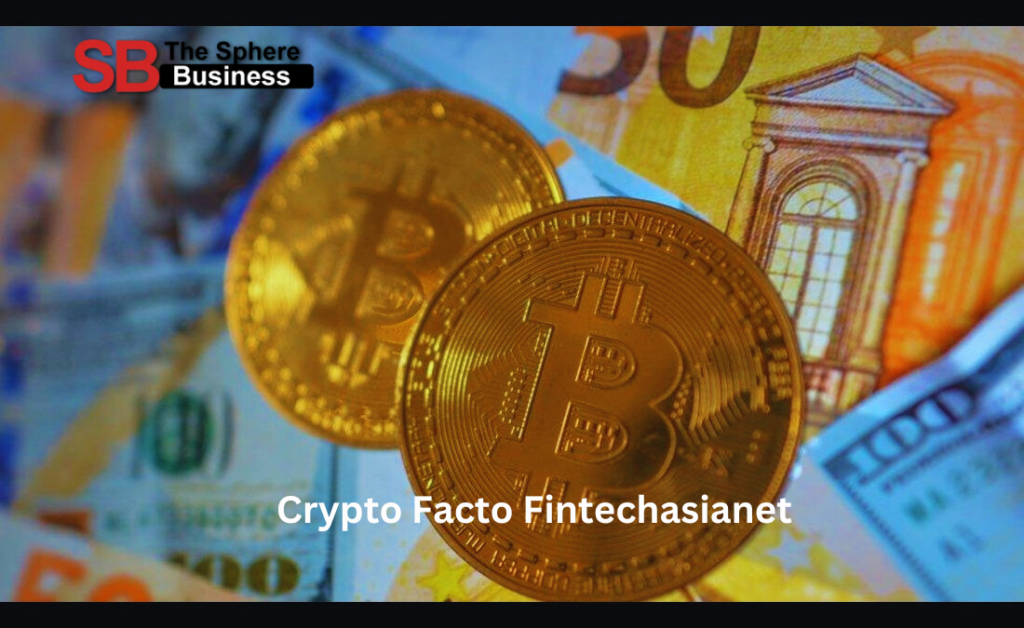Understanding “Crypto Facto Fintechasianet”: Exploring the Convergence of Cryptocurrency and Financial Technology

In the evolving landscape of finance and technology, the keyword “Crypto Facto Fintechasianet” represents a convergence of multiple influential trends. The term integrates “crypto,” referring to cryptocurrencies, “facto,” which implies something of a factual or legal nature, and “fintechasianet,” a blend of fintech (financial technology) and Asianetwork. Together, these elements point towards the transformation of the financial sector, particularly in Asia, driven by the intersection of digital currencies, technological advancements, and regional innovations.
This article delves into the significance of “Crypto Facto Fintechasianet,” explaining its components, relevance in the modern financial ecosystem, and how it is reshaping the future of finance in Asia and beyond.
1. What is “Crypto”?
The term “crypto” is short for cryptocurrency, a form of digital or virtual currency that uses cryptography for security. Cryptocurrencies are decentralized and typically operate on blockchain technology, which ensures transparency and immutability of transactions. Since the launch of Bitcoin in 2009, the world has witnessed the growth of thousands of cryptocurrencies, including Ethereum, Binance Coin, and others.
Cryptocurrencies offer several advantages, such as reduced reliance on traditional financial institutions, faster cross-border transactions, and increased privacy. These digital assets are becoming increasingly popular as an alternative investment, with both institutional investors and retail traders participating in crypto markets globally. In the context of the term “Crypto Facto Fintechasianet,” the cryptocurrency revolution plays a crucial role in transforming the financial sector, especially in the Asian markets.
2. The Role of “Facto” in Crypto and Fintech
The word “facto” comes from the Latin term “in facto,” which refers to a situation based on fact, rather than law (or in some cases, practice). In the context of “Crypto Facto,” it suggests a recognition of cryptocurrency as a legitimate form of financial asset or means of exchange, even if not always backed by traditional laws or centralized authorities.
In the financial world, legal frameworks and regulations are evolving to address the unique characteristics of cryptocurrencies and their decentralized nature. While many countries have adopted legal frameworks for crypto, some are still in the process of developing regulatory policies. “Facto” in this sense can indicate the growing acceptance of cryptocurrencies as a valid asset class, despite the lack of universal legal regulation.
For example, some Asian countries, such as Japan and South Korea, have embraced cryptocurrencies by establishing clear regulatory guidelines that provide legitimacy and security to crypto traders and investors. This recognition is a key component of the “Crypto Facto” phenomenon, as it highlights the increasing fact of crypto’s role in the financial system.
3. Fintech and Its Role in Financial Innovation
Fintech, short for financial technology, is the application of technology to improve, innovate, or disrupt traditional financial services. Fintech encompasses a broad range of technologies, from digital payment solutions and peer-to-peer lending to blockchain, robo-advisors, and cryptocurrency exchanges. The rise of fintech has radically transformed the financial services industry, enabling faster, more efficient, and inclusive services.
In Asia, fintech has seen massive growth due to the region’s high internet penetration, mobile usage, and supportive government policies. Asian countries like China, India, Singapore, and South Korea have become global fintech hubs, driving innovations in mobile payments, blockchain, digital wallets, and even artificial intelligence in banking services.
“Fintechasianet” implies the dynamic financial technology landscape within the Asian region, where traditional banking systems are being supplemented—or even replaced—by digital-first solutions. This network of fintech innovation, powered by mobile internet and increasing digital literacy, is the foundation of a “Crypto Facto Fintechasianet” ecosystem, enabling cryptocurrencies to thrive in an advanced technological environment.
4. The Rise of “Crypto Facto Fintechasianet”
The fusion of “crypto,” “facto,” and “fintechasianet” signifies a transformative financial landscape in Asia, where cryptocurrency is not just a speculative asset but an integral component of the broader financial technology ecosystem. The term “Crypto Facto Fintechasianet” reflects the increasing acknowledgment of cryptocurrency within fintech, particularly in Asia, where the demand for alternative financial solutions is growing.
Several factors are contributing to this rise:
4.1 Asia’s Technological Advancements
Asia is home to some of the world’s most innovative economies, including China, Japan, Singapore, and South Korea. These countries are at the forefront of the digital economy, with advanced infrastructure, high-speed internet, and large-scale adoption of mobile devices. These advancements have made it easier for cryptocurrencies to integrate with fintech applications, such as digital wallets, remittances, and decentralized finance (DeFi).
4.2 Government Regulations and Legal Recognition
Governments in Asia are increasingly recognizing the importance of cryptocurrency. While China initially banned crypto trading, the country has since been experimenting with central bank digital currencies (CBDCs), such as the digital yuan, signaling the shift toward digital currencies. Meanwhile, countries like Japan and Singapore have established favorable regulatory environments that provide legal clarity for cryptocurrency businesses.
The growth of “Crypto Facto” in Asia is supported by this regulatory framework, which allows for better consumer protection, enhanced trust in crypto platforms, and smoother integration into the existing financial systems.
4.3 Cryptocurrency as a Payment Method
As digital currencies gain legitimacy, they are being adopted as legitimate payment methods in various sectors, including e-commerce, gaming, and remittance services. In Asia, where cross-border transactions are common, cryptocurrencies offer a cheaper and faster alternative to traditional payment methods like wire transfers or remittance services.
Cryptocurrencies also provide an efficient solution to the unbanked and underbanked populations, who may lack access to traditional financial services but can use digital wallets and cryptocurrencies via their mobile phones.
4.4 Cryptocurrency as an Investment Vehicle
Cryptocurrencies have gained significant traction as an investment asset, with both retail and institutional investors recognizing their potential. This is especially true in Asia, where tech-savvy investors are drawn to the speculative nature of crypto markets. The growth of platforms that allow trading, staking, and yield farming has created a thriving ecosystem of crypto enthusiasts and investors.
Moreover, blockchain technology is offering new possibilities for businesses, including smart contracts, supply chain management, and decentralized finance (DeFi), all of which are powered by the same cryptographic technologies that underpin cryptocurrencies.
5. The Future of “Crypto Facto Fintechasianet”
The future of “Crypto Facto Fintechasianet” holds promising potential as cryptocurrencies continue to integrate with emerging technologies and financial services. Several key trends will shape this future:

5.1 Central Bank Digital Currencies (CBDCs)
Many Asian governments are experimenting with or planning to launch their own central bank digital currencies (CBDCs). These government-backed digital currencies could coexist alongside private cryptocurrencies, providing a hybrid financial ecosystem where both traditional fiat currencies and decentralized assets have a place. The rise of CBDCs will likely further legitimize crypto and digital payments, making them more mainstream.
5.2 Increased Cross-Border Collaboration
As cryptocurrency adoption grows in Asia, countries will likely work together to create cross-border frameworks for crypto trading, remittances, and payments. Such collaboration could lead to reduced transaction fees, faster processing times, and enhanced economic integration across the region.
5.3 Enhanced Security and Privacy Measures
As more people embrace digital currencies, the need for security and privacy will become even more critical. Innovations in blockchain technology, biometric authentication, and decentralized identity systems will enhance the security of crypto transactions, helping to build trust among users.
5.4 Education and Awareness
The continued rise of “Crypto Facto Fintechasianet” will also depend on educating consumers about the potential benefits and risks of cryptocurrencies and fintech. Financial literacy programs and awareness campaigns will play a crucial role in helping individuals understand how to navigate this rapidly changing ecosystem.
Conclusion
The concept of “Crypto Facto Fintechasianet” embodies the convergence of cryptocurrency, legal recognition, and fintech innovation within the Asian region. As cryptocurrencies and digital currencies gain acceptance, Asia is emerging as a global leader in the adoption and regulation of digital finance technologies.
By integrating the decentralized power of cryptocurrencies with the cutting-edge advancements of fintech, the financial landscape is becoming more inclusive, efficient, and innovative. As we look to the future, the evolution of “Crypto Facto Fintechasianet” will continue to redefine the way we think about finance, technology, and the global economy, paving the way for a new era of financial empowerment.

